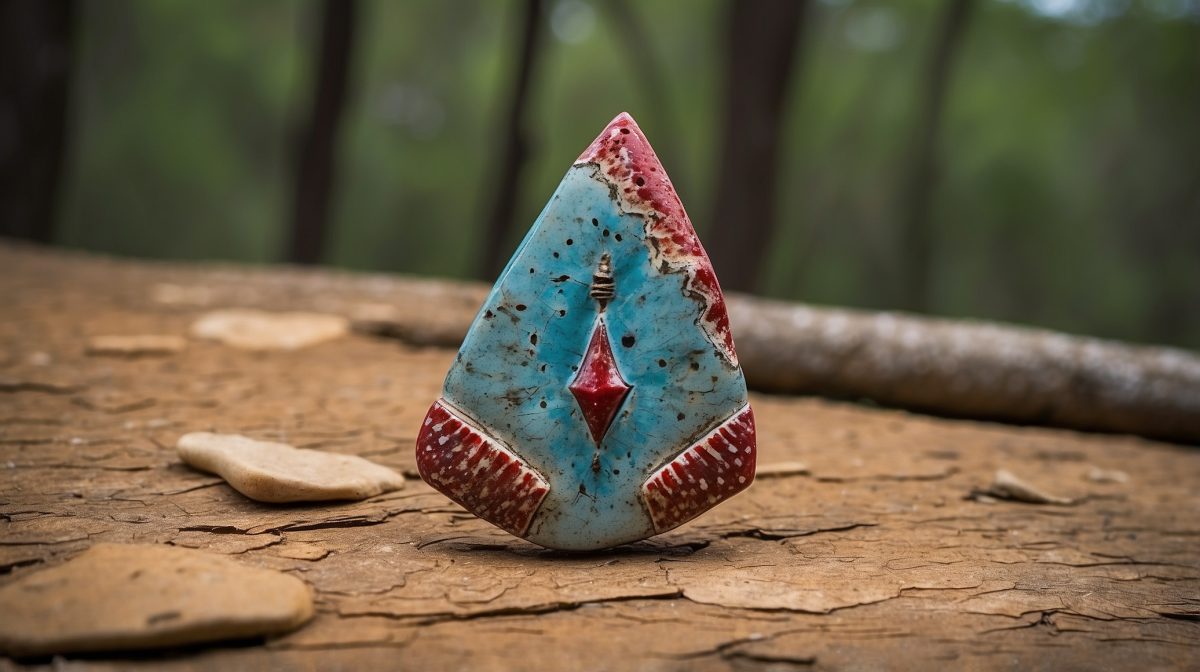Before we start kickin’ up dust, let’s tip our hats to the rich history of this land. Texas Hill Country was once a stompin’ ground for various Native American tribes, each with their own unique culture and traditions. They left behind a treasure trove of arrowheads, which are not only artifacts of their existence but also a testament to their craftsmanship and survival. So, let’s get set to uncover these hidden gems and learn a thing or two about the folks who made ’em.
The Rich History of Texas Hill Country
Imagine, if y’all will, a time when Texas Hill Country was teemin’ with life – the Comanche, the Apache, and other tribes callin’ these hills home. They hunted, they gathered, and they fought right here in our backyard. It’s this vibrant history that makes our land ripe for arrowhead enthusiasts. These artifacts are like pages from a history book, lyin’ there just waitin’ for someone to read ’em.
Now, the reason why Texas Hill Country is such a hotbed for arrowhead hunters is simple – it’s all about the geography. With its rivers, creeks, and fertile lands, it was a prime spot for Native Americans to settle down and thrive. And where there were folks livin’, there were tools bein’ made, used, and eventually lost or left behind. That’s why arrowheads are as common ’round here as bluebonnets in spring.
Understanding Arrowhead Types
Let’s talk arrowheads – and I ain’t referrin’ to the ones you’d find at the end of a modern-day huntin’ arrow. These little pieces of flint and chert come in all shapes and sizes, each tellin’ a story of its own. From the tiny bird points to the large spearheads, every type served a purpose, whether it was for huntin’ game or protectin’ the tribe. And knowin’ your Clovis from your Dalton points is key to understandin’ their history.
Recognizin’ these different types is like knowin’ your way ’round a Texas BBQ – it takes a keen eye and a bit of know-how. Some points were used for fishin’, while others were crafted for war. The materials, craftsmanship, and wear all give clues about their use and age. So when you’re out there lookin’, take a moment to appreciate the story each arrowhead is whisperin’ to you.
The Legal Side of Arrowhead Hunting
Now, I reckon it’s time to talk about the legal side of arrowhead huntin’. Y’all need to understand that respectin’ private property is paramount. If you’re itchin’ to search somewhere, you best get permission from the landowner first. And as for state laws, Texas has clear regulations about what’s fair game and what’s off-limits, especially when it comes to historical sites.
It’s not just about stayin’ on the right side of the law; it’s about ethics too. These artifacts are a part of our shared heritage, and it’s our duty to protect ’em for future generations. So, when you’re out there, remember that you’re not just a hunter – you’re a steward of history. Take only memories, leave only footprints, and let’s keep the legacy of Texas Hill Country alive and well.
Where to Look for Arrowheads
Alright, let’s get down to brass tacks – where do you start lookin’ for these treasures? Well, arrowheads can be pretty much anywhere, but they do have a fondness for certain locales. Think ’bout where you’d set up camp if you were livin’ off the land – near water, good for huntin’, and easy to defend. Creek beds, plowed fields, and old settlement sites are all good places to start your search.
Now, I ain’t gonna give away all my secret spots, but I’ll tell ya this much: keep your eyes peeled for places where the earth has been moved or eroded. That’s where arrowheads like to hide. And remember, it’s not about findin’ a jackpot every time; it’s about enjoyin’ the thrill of the hunt and respectin’ the land that gives up its secrets.
Tools of the Trade
When it comes to tools for arrowhead huntin’, you don’t need a whole shed full of fancy equipment. A good pair of eyes and a patient disposition will serve you better than any high-tech gadget. But a few basics can help – a trowel, a sieve, and a sturdy pair of gloves will do for starters. These’ll help you sift through the soil and protect your hands from the sharp edges of both the land and the arrowheads.
It’s important to use these tools with care, though. We’re not diggin’ to China here; we’re lookin’ for delicate pieces of history. So be gentle with the earth and with the artifacts. You wouldn’t want to be the one who snaps a thousand-year-old point in half just ’cause you got too excited, now would ya?
Techniques for Successful Arrowhead Hunting
Now, if you wanna be successful at findin’ arrowheads, you gotta have the right technique. Walkin’ fields after a good rain can bring artifacts to the surface, and scourin’ freshly plowed land can reveal hidden treasures. Keep your gaze fixed on the ground and take it slow – haste makes waste, after all. And don’t forget to look in the places others might overlook; sometimes the best finds are in the most unlikely spots.
Patience is more than just a virtue in arrowhead huntin’; it’s a necessity. You might go out dozens of times without findin’ so much as a chip. But remember, each trip is a chance to enjoy the great outdoors and learn a little more about the land. Respect the history beneath your feet, and sooner or later, it’ll reward you with a glimpse into the past.
Arrowhead Hunting Etiquette
Arrowhead huntin’ comes with its own set of unwritten rules, and followin’ ’em is what separates the true enthusiasts from the folks just lookin’ to make a quick buck. First off, never dig on land you don’t have permission to explore. And if you’re lucky enough to find a significant site, consider leavin’ it be. Some things are better left for the professionals to handle, so they can preserve the context of the find.
And here’s another piece of advice: if you come across a burial site or any human remains, stop what you’re doin’ and contact the authorities immediately. It’s not just the law; it’s a matter of respect for those who came before us. We’re guests in the home of history, so let’s mind our manners and act accordingly.
Cleaning and Preserving Your Finds
Once you’ve got your hands on some arrowheads, you’ll wanna clean ’em up nice and proper. But hold your horses – don’t go rushin’ in with soap and water. Start by gently brushin’ off the dirt with a soft-bristled brush. If you need to wash ’em, use plain water and be as gentle as a summer breeze. Harsh cleanin’ can damage these relics, and that’s the last thing we want.
As for preservation, it’s all about keepin’ ’em safe and sound for the long haul. Display your finds in a way that protects ’ems, like in a shadow box or a display case with a bit of cushionin’. Keep ’em out of direct sunlight, and avoid any harsh chemicals. Treat these artifacts with the care they deserve, and they’ll be around to tell their tales for generations to come.
Conclusion
Well, y’all, we’ve come to the end of our little expedition. Arrowhead huntin’ in Texas Hill Country is more than just a hobby; it’s a way to connect with the land and its history. It’s about preservin’ the legacy of those who walked these hills long before us. So, whether you’re a seasoned hunter or just gettin’ started, remember to tread lightly, respect the land, and cherish every piece of the past you’re lucky enough to find.
Now, go on and experience the thrill of the hunt, keepin’ in mind that the true treasure ain’t always what you find, but the memories you make along the way. Happy huntin’, and may the spirits of Texas Hill Country guide your steps!
FAQs
Is it legal to collect arrowheads in Texas Hill Country?
Yes, it’s legal to collect arrowheads in Texas Hill Country, but always make sure you’re followin’ local laws and regulations. Gettin’ permission from landowners and avoidin’ protected historical sites is key to stayin’ on the right side of the law.
Where are the best spots in Texas Hill Country to find arrowheads?
The best spots for findin’ arrowheads are usually near water sources, like creek beds, or in areas with a history of Native American settlement. Look for places where the soil has been disturbed or eroded, but remember to keep specific locations under your hat to protect the sites.
Do I need a permit to hunt for arrowheads on public land?
In most cases, you won’t need a permit to hunt for arrowheads on public land, but there are exceptions, especially if the land is federally owned or protected. Always check the specific rules for the area you’re interested in before you set out.
How can I tell if an arrowhead is authentic or a reproduction?
To tell if an arrowhead is authentic, look for signs of age and wear, like patina and flaking patterns. Reproductions often lack the subtle details and historical context of genuine artifacts. When in doubt, consult with an expert.
What should I do if I find a significant archaeological site?
If you stumble upon a significant archaeological site, the best course of action is to leave it untouched and report your find to local authorities or historical societies. This way, professionals can properly investigate and preserve the site.


